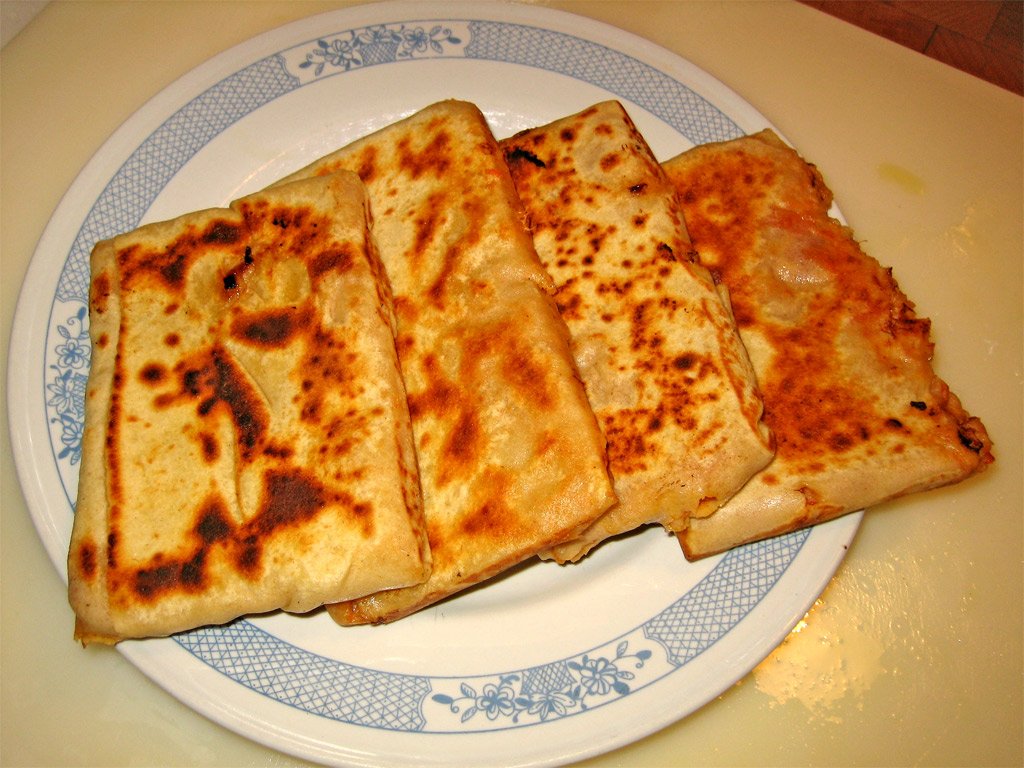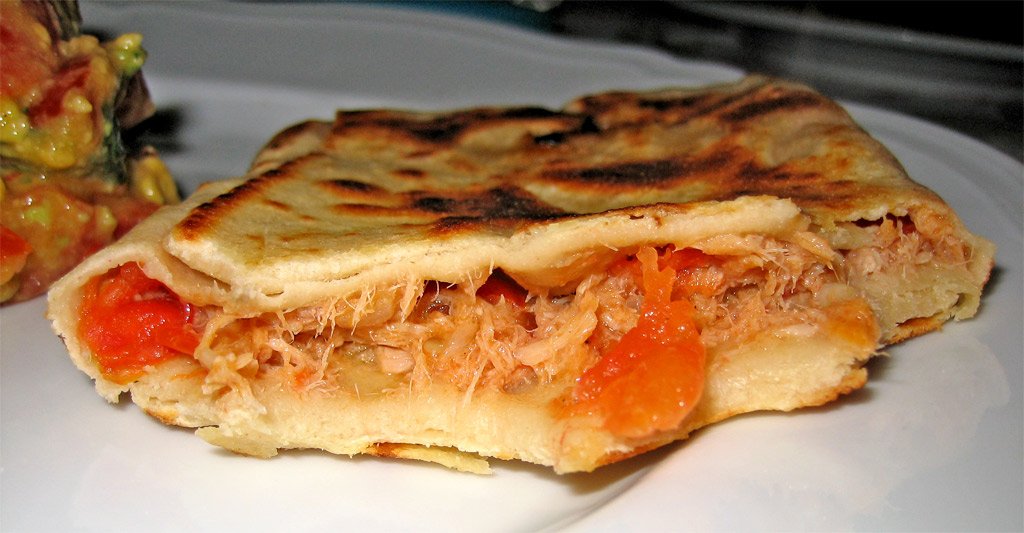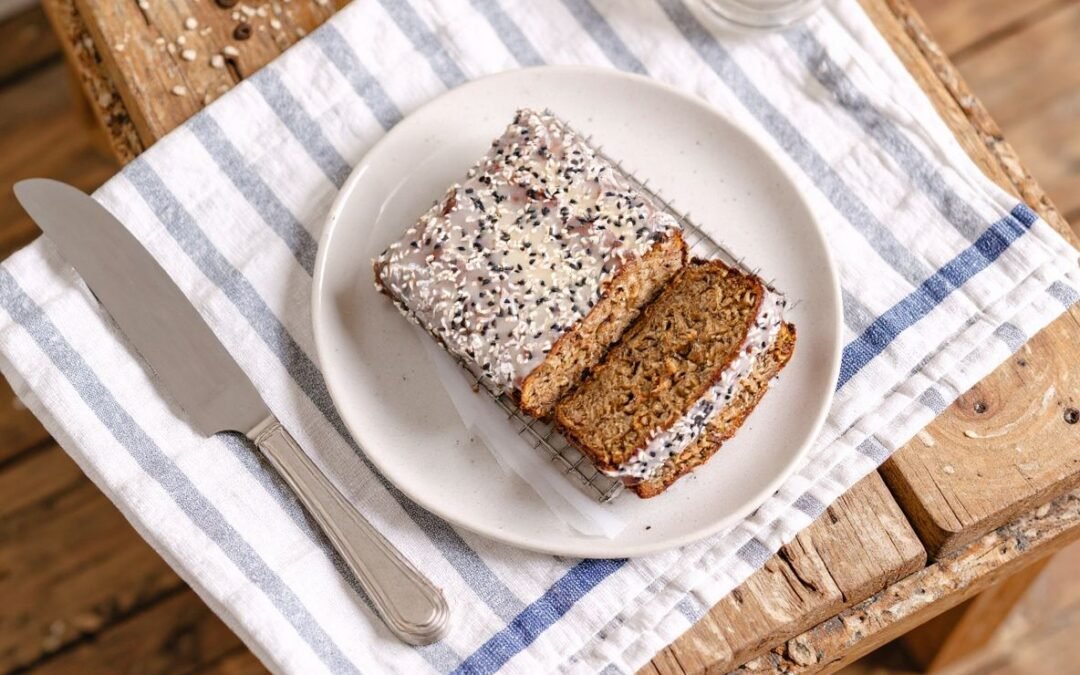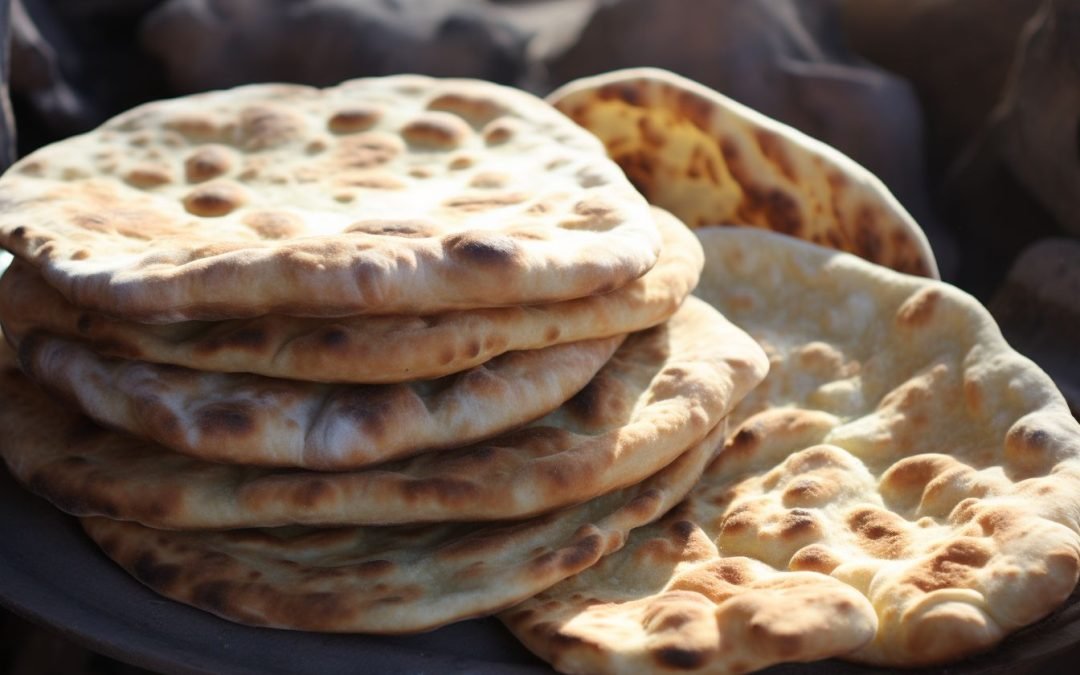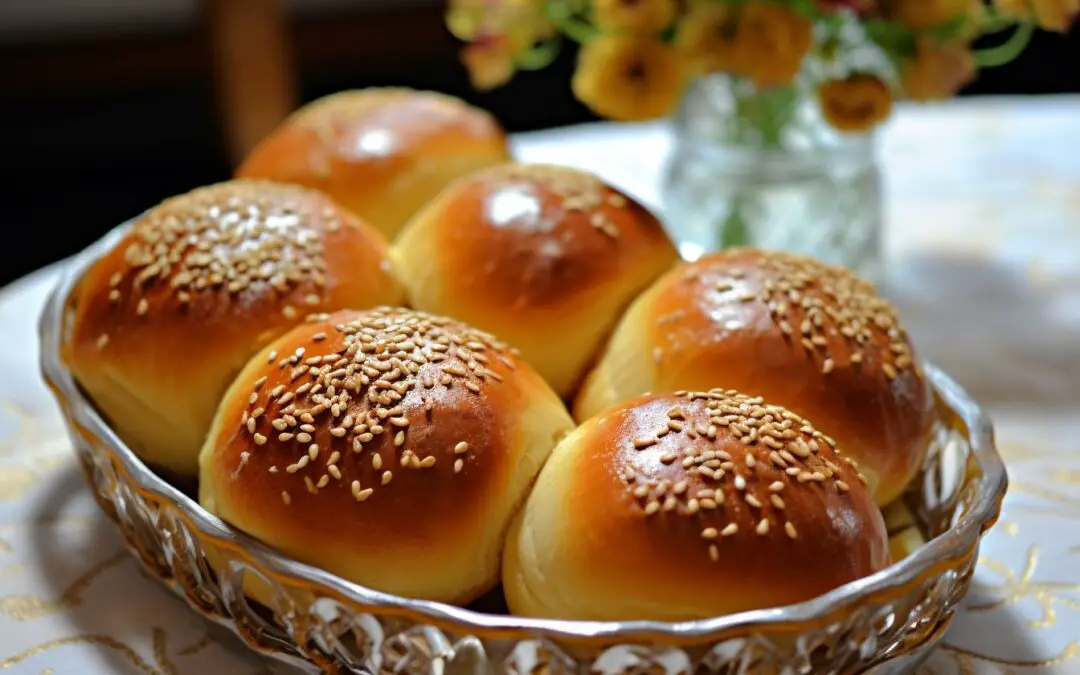As my spouse and I walked into the Middle Eastern restaurant in Reno, Nevada, the aroma of freshly baked bread filled the air. The friendly staff greeted us and showed us our table. As we perused the menu, we noticed a dish called mhadjeb Algerian stuffed bread that caught our attention.
We were curious, therefore we decided to order it and were not disappointed. The bread was soft and fluffy, with a crispy exterior, and the filling was a delicious blend of ground beef, onions, and spices. The burst of flavors in every bite surprised us. We asked the server about the dish and learned that Mhadjeb is a popular street food in Algeria, and people there often have it for breakfast or as a snack.
Overall, our experience with the mhadjeb was delightful, and we left the restaurant with a newfound appreciation for Middle Eastern cuisine.
History of Mhadjeb
Mhadjeb is a popular Algerian bread that locals have been enjoying for generations. The word “Mhadjeb” comes from the Arabic word “hajab,” which means “to cover.” This is because the dough is folded over the filling before baking it, creating a delicious pocket of flavor. The dish has probably originated in the northern coastal region of Algeria and has since spread throughout the country.
Traditionally, mhadjeb contains a filling of onions, tomatoes, and spices, although there are many variations in the recipe. Some people add meat, such as ground beef or lamb, while others use different vegetables or herbs.
Locals typically eat mhadjeb as a snack or light meal which you can buy from street vendors or in small cafes. People of all ages in Algeria love this dish and enjoy it.
As I sat down at the small table in the Middle Eastern restaurant, I couldn’t help but notice the delicious aroma coming from the kitchen. The restaurant worker, who had probably been there for a long time, brought a plate of mhadjeb to my table.
The bread is made from a simple dough of flour, semolina, water, and salt, which is then stuffed with a mixture of spiced vegetables, such as tomatoes, onions, and peppers. The bread is then folded over and cooked on a griddle until it is golden brown and crispy on the outside.
The flavors of the vegetables and spices mixed together in the bread were amazing. I couldn’t get enough of it. The dish was so simple yet so delicious and is a staple in Algerian cuisine.
Overall, the simplicity and flavor of this stuffed bread impressed me. It’s a perfect snack or light meal, and I can see why it’s so popular in Algeria. I’m glad I had the opportunity to try it, and I would definitely order it again.
As I was sitting in the restaurant, enjoying the delicious meal, suddenly there was a loud noise outside. I rushed to the window to see what happened and saw a car crash right in front of the restaurant. I was worried about the people involved in the accident, but thankfully, it seemed like no one was hurt. The restaurant staff quickly called the emergency services and went outside to check on the drivers. While waiting for the police to arrive, I couldn’t help but notice how the staff remained calm and composed during the whole ordeal. They even managed to keep serving the customers without any interruptions. In the end, the police arrived, and the situation settled.
After finishing my delicious mhadjeb at that local restaurant, I couldn’t resist the urge to ask the chef for the recipe. The bread had a crispy exterior that gave way to a soft, fluffy interior filled with a savory mixture of vegetables and spices. I knew I had to try making it at home.
Once the commotion in the restaurant settled, I approached the chef and asked him if he would be willing to share the recipe with me. To my delight, he agreed and jotted down the ingredients and steps on a piece of paper. Here are the ingredients he listed: all-purpose flour, semolina flour, salt, yeast, water, olive oil, onions, tomatoes, chili pepper, and black pepper
When I make mhadjeb, I usually like to serve it with a few side dishes to complement the flavors and textures of the stuffed bread. Here are a few of my favorite options. For example:
- Harissa: This spicy North African condiment is the perfect accompaniment to mhadjeb. It adds a nice kick of heat and pairs well with the savory flavors of the bread. You can either make your own harissa or buy it pre-made at most grocery stores.
- Cucumber salad: A refreshing cucumber salad is a great way to balance out the richness of the mhadjeb. I like to slice cucumbers thinly and toss them with some lemon juice, olive oil, and a pinch of salt.
- Roasted vegetables: Roasting some vegetables is a great way to add some color and flavor to your meal. I like to roast bell peppers, eggplant, and zucchini with a little olive oil and some herbs like thyme and rosemary.
- Tabbouleh: This Middle Eastern salad contains parsley, mint, tomatoes, and bulgur wheat. It’s light and refreshing and pairs well with the flavors of the mhadjeb.
- Hummus: Hummus is a great dip for the mhadjeb. It’s creamy and rich, and the flavors of the chickpeas and tahini complement the bread nicely.
Overall, there are many different side dishes that you can serve with mhadjeb. These are just a few of my personal favorites, but feel free to experiment and find your own perfect combination!
Ingredients of Mhadjeb
Dough Ingredients
To make the perfect mhadjeb, you need to have the following ingredients for the dough:
- 1/2 cup of All-purpose flour
- 1 cup of semolina flour
- A pinch of Salt
- Active dry yeast
- 1 1/2 cup warm water
- Olive oil
Filling Ingredients
For the filling, you need the following ingredients:
- 4 onions
- 2 tomatoes
- Chili pepper
- Salt
- Black pepper
- 2 tbsp of olive oil
That’s it! With these ingredients, I can make delicious Mhadjeb that my family and friends love.
How to Make Mhadjeb Algerian Stuffed Bread?
Preparing the Dough
- To make mhadjeb, I start by making the dough. I mix the flour, salt, sugar, and yeast together in a bowl.
- Then, I add warm water and knead the mixture until it forms a smooth dough.
- The crucial step involves submerging a plastic bag in warm water. While it is still dripping wet, place the dough inside, cover it, and allow it to rest for about an hour.
- After resting, remove the dough and gently knead it for a few minutes.
- Moisten your hands with oil and shape the dough into balls, placing them next to each other while remembering their order. Allow them to rest once again, as the longer the dough rests, the better the results will be.
Preparing the Filling
- Slice the onions into thin, elongated pieces, then cook them in oil over medium to low heat. Continuously stir and cover until they turn translucent and tender.
- Peel the tomatoes and thinly chop them. Combine with the onions, salt, and spices. Cover and let them cook over low heat, stirring occasionally to prevent sticking.
Assembling and Cooking
- Place the first ball of dough on an oiled work surface and spread it out. Lightly sprinkle with oil to facilitate shaping it into a large circle.
- Position the filling of onions and tomatoes in the center, preferably chilled.
- Fold each side over to encase the stuffing, creating a square shape.
- Brush a light layer of oil onto the surface of the obtained square, then carefully transfer it to a baking sheet or pan set over medium-low heat.
- Cook the first side until it becomes brown nicely, then flip it over and repeat the process for the second side.
Serving Suggestions
When it comes to serving mhadjeb, there are many options to choose from. Here are a few suggestions that I find to be particularly delicious:
- Traditional: Serve mhadjeb with a side of harissa and a cup of mint tea for a traditional Algerian meal. The spicy harissa complements the savory filling of the bread, while the mint tea helps to cool down your taste buds.
- Salad: Pair mhadjeb with a simple salad for a light and refreshing meal. I like to make a salad with mixed greens, cherry tomatoes, cucumbers, and a simple vinaigrette.
- Dips: mhadjeb is perfect for dipping. Try serving it with hummus, baba ganoush, or tzatziki for a Mediterranean twist.
- Sandwich: Use mhadjeb as a bread substitute for your favorite sandwich. I like to fill mine with grilled chicken, roasted vegetables, and a dollop of tzatziki.
No matter how you choose to serve it, I’m sure you’ll love the combination of flavors and textures in this Algerian stuffed bread.
Variations of Mhadjeb
As I explored the world of Algerian cuisine, I discovered that locals make mhadjeb in various ways. Each region of Algeria has its own version of this delicious stuffed bread. Here are some of the variations I found:
- Mhadjeb with Meat: This version of mhadjeb is made by stuffing the bread with spiced minced meat, onions, and tomatoes. It is a hearty and filling meal that is perfect for lunch or dinner.
- Mhadjeb with Cheese: In this variation, the bread is stuffed with a mixture of cheese, herbs, and spices. The cheese used can vary from feta to mozzarella, depending on personal preference.
- Mhadjeb with Vegetables: For a healthier option, mhadjeb can be stuffed with a variety of vegetables such as bell peppers, eggplant, and zucchini. This version is perfect for vegetarians and vegans.
- Sweet Mhadjeb: This variation of mhadjeb is made by stuffing the bread with a sweet filling such as honey, dates, or figs. It is a popular dessert in Algeria and locals often serve it on special occasions.
- Mhadjeb with Fish: This version is made by stuffing the bread with fish, onions, and tomatoes. It is a popular dish in coastal regions of Algeria and is perfect for seafood lovers.
Overall, Mhadjeb is a versatile dish that you can customize to suit individual tastes and preferences. Whether you prefer meat, vegetables, or sweet fillings, there is a mhadjeb variation for everyone to enjoy.
Conclusion
Overall, I really enjoyed learning about and making mhadjeb Algerian stuffed bread. It was a fun and delicious experience that I would definitely recommend to anyone who loves trying new foods.
One thing that really stood out to me was how versatile the recipe is. You can stuff the bread with almost anything you like, from meat and vegetables to cheese and herbs. This makes it a great option for both vegetarians and meat lovers alike.
I also appreciated how easy the recipe was to follow. Even though I had never made stuffed bread before, I was able to create a tasty and attractive dish on my first try. The dough was simple to make and the filling ingredients were easy to find at my local grocery store.
If you’re looking for a new and exciting dish to try, I highly recommend giving this bread a chance. It’s a delicious and satisfying meal that is sure to impress your family and friends.
